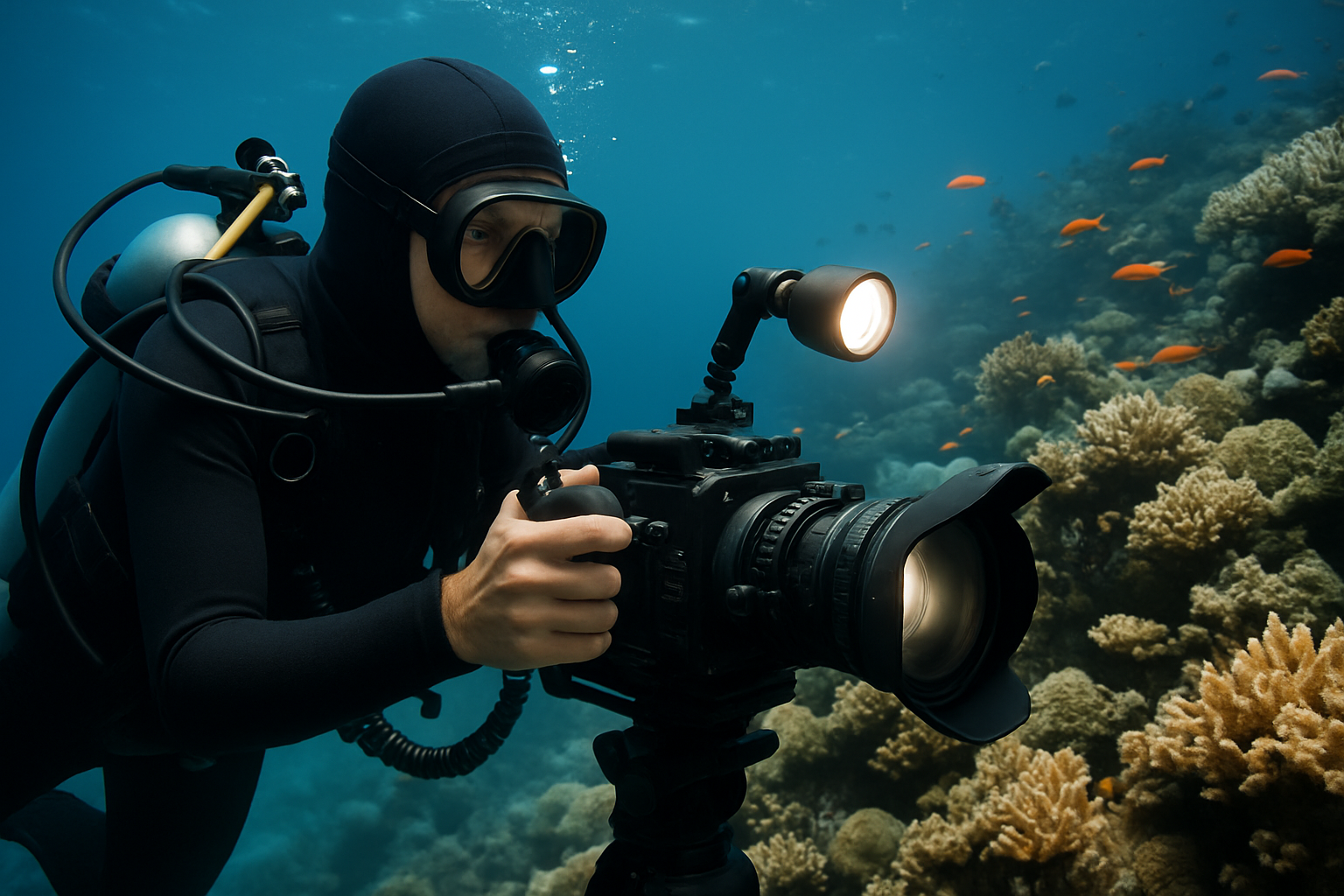The Cinematic Tapestry of Underwater Filmmaking
In the depths of our oceans, a new frontier of filmmaking is emerging, captivating audiences with its unique blend of artistry and technical prowess. Underwater cinematography, once relegated to nature documentaries, has evolved into a sophisticated art form that pushes the boundaries of visual storytelling. This immersive medium not only showcases the beauty of marine ecosystems but also offers filmmakers innovative ways to craft narratives, create atmospheres, and challenge our perceptions of cinema. As technology advances and environmental concerns grow, underwater filmmaking stands at the intersection of art, science, and conservation, poised to make waves in the world of entertainment.

Technological Marvels Beneath the Waves
Today’s underwater cinematographers benefit from cutting-edge equipment that allows for unprecedented creativity and flexibility. High-resolution digital cameras enclosed in waterproof housings capture vivid imagery with remarkable clarity. Advanced lighting systems combat the color absorption that occurs at depth, ensuring that the vibrant hues of marine life are faithfully reproduced. Remotely operated vehicles (ROVs) equipped with cameras can now reach depths previously inaccessible to human divers, expanding the visual canvas available to filmmakers.
Crafting Narratives in an Alien World
Underwater filmmaking presents unique storytelling opportunities and challenges. Directors must contend with the three-dimensional nature of the aquatic environment, where action can unfold in any direction. This spatial freedom allows for innovative shot compositions and camera movements that are impossible on land. The weightlessness of water also influences actor performances and choreography, resulting in a dreamlike quality that can enhance the narrative’s emotional impact.
Environmental Storytelling and Conservation
As concern for marine ecosystems grows, underwater filmmaking has become a powerful tool for environmental advocacy. Documentaries showcasing the beauty and fragility of underwater habitats have raised awareness about issues such as coral bleaching, overfishing, and plastic pollution. By bringing these hidden worlds to the surface, filmmakers play a crucial role in fostering a connection between audiences and the ocean, inspiring conservation efforts and policy changes.
Challenges and Innovations
Despite technological advancements, underwater filming remains a formidable challenge. Logistics such as equipment transportation, diver safety, and unpredictable weather conditions add layers of complexity to productions. However, these obstacles have spurred innovation. Virtual production techniques, including the use of LED volumes and computer-generated imagery, now allow filmmakers to recreate underwater environments with unprecedented realism, blending practical and digital elements seamlessly.
The Future of Subaquatic Cinema
As virtual reality and augmented reality technologies mature, underwater filmmaking is poised for another revolution. Immersive experiences that allow viewers to virtually explore ocean depths are becoming more sophisticated, blurring the lines between education and entertainment. Additionally, advancements in underwater communication systems are facilitating more complex and ambitious productions, opening up new possibilities for storytelling beneath the waves.
Cultural Impact and Audience Reception
Underwater films have long held a fascination for audiences, tapping into our innate curiosity about the mysterious realms beneath the surface. From classic adventure tales to modern thrillers, the underwater setting continues to captivate viewers with its otherworldly beauty and inherent tension. As filmmaking techniques evolve, audiences are treated to increasingly realistic and immersive portrayals of submarine environments, fostering a deeper appreciation for marine life and ecosystems.
Artistic Expression in the Blue
Beyond its technical aspects, underwater filmmaking has emerged as a distinct artistic medium. Cinematographers and directors are exploring the unique aesthetic properties of water, using its refractive and reflective qualities to create stunning visual compositions. The play of light through water, the graceful movements of marine life, and the abstract patterns formed by bubbles and currents all contribute to a rich visual language that is uniquely aquatic.
Training the Next Generation
As interest in underwater filmmaking grows, specialized training programs and workshops have emerged to cultivate the next generation of aquatic auteurs. These programs combine traditional filmmaking techniques with dive training, marine biology, and underwater photography skills. The interdisciplinary nature of this education reflects the diverse knowledge required to succeed in this challenging field, ensuring that future productions will continue to push the boundaries of what’s possible beneath the waves.
In conclusion, underwater filmmaking represents a vibrant and evolving sector of the entertainment industry, one that combines artistic vision with technical innovation and environmental consciousness. As we continue to explore and understand our planet’s oceans, the films and documentaries produced in this medium will play an increasingly important role in shaping our relationship with the underwater world. From blockbuster spectacles to intimate marine portraits, underwater cinematography offers a window into a realm that remains, for many, as mysterious and captivating as outer space. As technology advances and creative boundaries are pushed, we can expect to see even more breathtaking and thought-provoking works emerge from the depths, continuing to inspire, educate, and entertain audiences around the globe.





